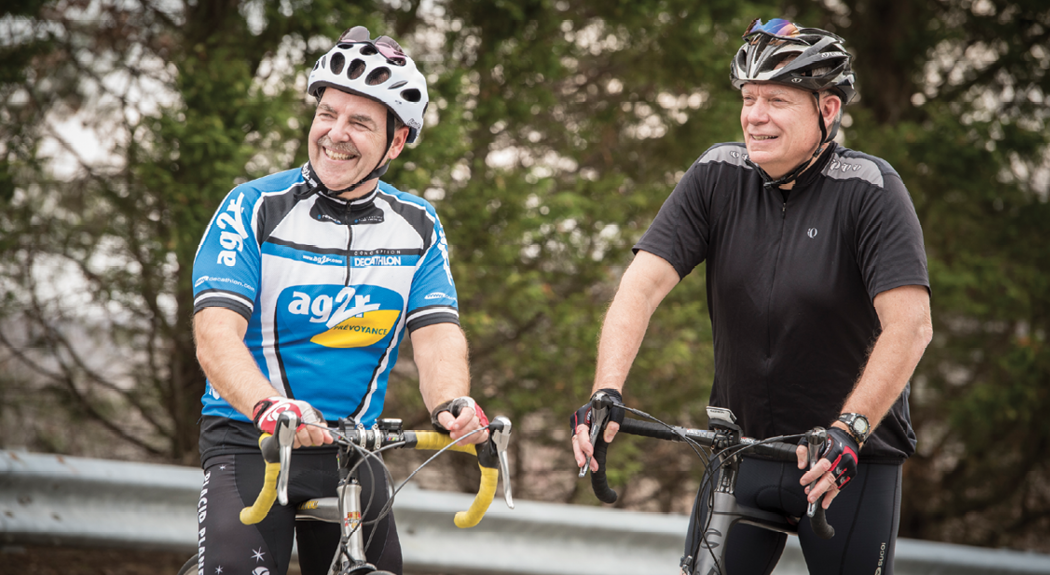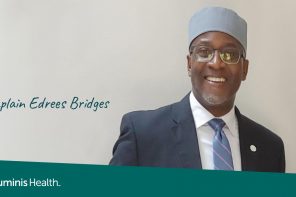Injuries and a lifetime of high-impact sports have left Doug Herman, 58, with significant knee damage and arthritis. Yet this competitive athlete maintains peak performance by varying his exercise routine and working closely with the orthopedic specialists at Anne Arundel Medical Center to help protect and preserve his knees. “I’ve been exercising my entire life. I’ve got to stay in motion,” he says.
Whether you’re an older weekend warrior or a young competitive athlete, the earlier you take steps to protect your joint health, the longer you can continue to participate in the activities you love.
Doug was a young surfer and water skier in the 1970s when he faced his first knee surgery to repair a torn ACL, leaving him vulnerable to arthritis. When doctors suggested that he pursue a less risky activity, he chose competitive running. But 15 years of continuous training and many marathons later, he was in trouble. “My orthopedist advised me to stop running to save my knees,” he says.
That’s when Doug switched to competitive cycling, a low-impact sport that puts much less pressure on lower body joints than running. That’s also when he learned the benefits of cross-training, a strategy that alternates high- and low-impact activities.
Low-impact exercises include walking, swimming, biking, light resistance work with exercise bands, some forms of dance, yoga and Pilates.
Mix It Up
“Regular exercise protects joints by strengthening the surrounding muscles and keeping bones strong, but sustained, high-impact exercise can place extreme impact on joints over the long term,” says Daniel Redziniak, MD, an AAMC board-certified orthopedist who specializes in sports medicine. “For example, when one leg hits the ground during a run, five times your body weight is translated across the knee joint, leading to wear.”
Cross-training can protect joint health in people of all ages and all activity levels by allowing time for the joints to recover from this stress, he says. It should include low-impact activities; exercises that strengthen the “core” area, which includes abdominal and back muscles; and a regular regimen of stretching to help joint-supporting tendons, ligaments and muscles stay limber, says Dr. Redziniak. This whole-body approach can help prevent not only common knee and hip problems, but also lower back pain, rotator cuff injuries of the shoulder, and a multitude of other bone and joint injuries, he adds.
“I now alternate my cycling sessions with swimming and core strengthening. And, I’m more careful with my weightlifting routine, using proper posture and limiting my time,” says Doug. “I feel stronger all the way around.”
Arthritis Options
Doug has also benefitted from orthopedic intervention to manage his arthritis symptoms. According to Dr. Redziniak, people with arthritis can help prolong the life of their joints and remain active by:
- Maintaining a healthy weight.
- Using ice and anti-inflammatory medication.
- Bracing joints for strenuous activities.
Those who need additional relief may benefit from therapies, including:
- Cortisone shots directly into the affected joints for extended pain relief.
- Viscosupplementation shots, which may help lubricate the affected joint for periods of up to six months.
Doug currently uses anti-inflammatory medications and viscosupplementation injections. Due to his careful arthritis management and the switch to cross-training, his doctors say he’ll likely avoid joint replacement surgery for up to a decade longer.
Doug doesn’t plan to let the inevitable surgery stop him. In fact, many people with artificial knee and hip joints can continue high-performance, competitive activities as long as they protect the new joints, says Dr. Redziniak. Doug’s got an advantage: He now knows exactly how to do that.
Learn more about The Joint Center at AAMC, which performs more joint replacements than any other hospital in Maryland.
Read more about how to protect bones and joints at any age.
 Daniel Redziniak, MD, is an orthopedic surgeon at Anne Arundel Medical Center.
Daniel Redziniak, MD, is an orthopedic surgeon at Anne Arundel Medical Center.



